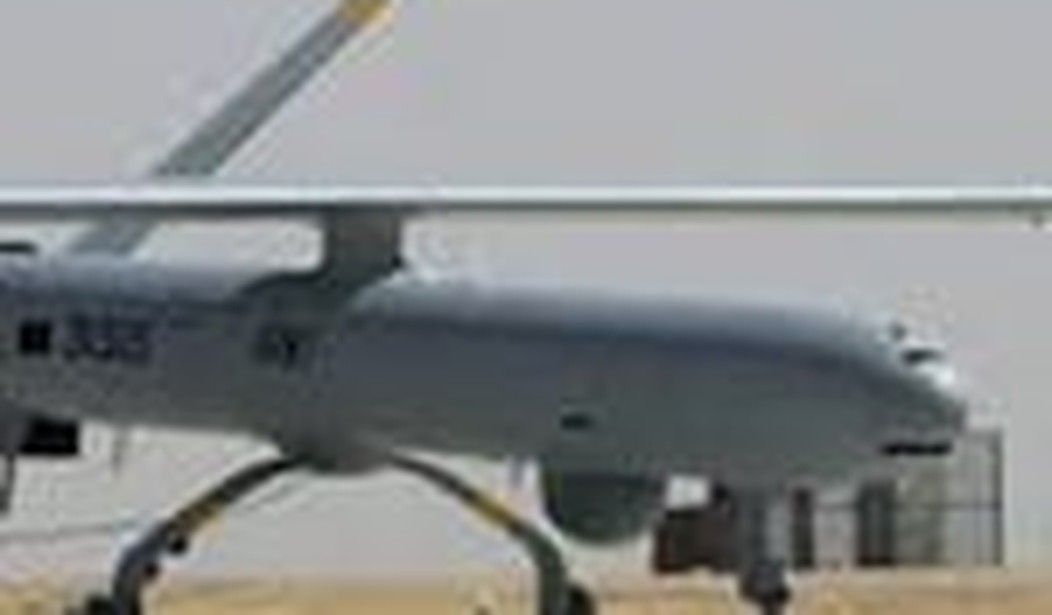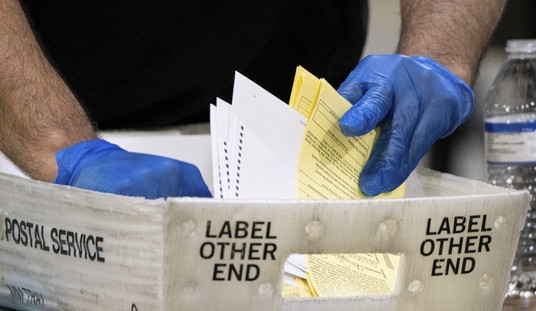Often, the deployment of drones in combat has been associated with modern Western countries. The U.S. “drone war” against al-Qaeda leaders in Iraq, Pakistan, Yemen, and Libya has become a common facet to reporting military affairs in the Middle East. However, another Middle Eastern “drone war” has been growing. This war is part of the broader conflict involving Iran, Israel, and the United States, now taking on an unmanned approach — pitting Iran and its proxies using drone aircraft against their enemies, and also against Western drones.
This front of the Iran vs. Western powers conflict received new attention following the October 6 intrusion of a UAV into Israeli airspace. Coinciding with the 39th anniversary of the start of the 1973 Yom Kippur War, the UAV emerged from somewhere over the Mediterranean (near the Hamas-controlled Gaza Strip) and was eventually shot down by the Israel Air Force. While multiple reports stated the unmanned aerial vehicle (UAV) had “mysterious origins,” most analysts concluded it was an Iranian or Lebanese Hezbollah-run operation. One Israeli analyst told CNN, “We know it originated in Lebanon.” Later, the deputy commander of the Iranian Revolutionary Guard Corp (IRGC) confirmed his country’s involvement, saying the drone proved Israel’s Iron Dome air-defense system “does not work.” On October 11, Lebanese Hezbollah leader Sayyed Hassan Nasrallah claimed full-responsibility, noting in a speech, “The drone managed to arrive in an area close to the Dimona [nuclear] plant”.
This would not be the first time Iran or its proxies have utilized UAV technology against Israel. In 2004 — with Iranian assistance — Lebanese Hezbollah launched the relatively simple Mirsad I drone into Israel. Flying around Israeli airspace for only a few minutes, the flight was described by regional security analyst Ze’ev Schiff as a “clear-cut case of aggression.” In November 2005, Lebanese Hezbollah launched another UAV into Israel. Due to the small size of Mirsad I UAVs, the Israelis had trouble detecting them. Demonstrating the 2005 UAV flight’s propaganda value, one Hezbollah parliamentarian noted:
The Israeli military missed it. This is a victory not only for Hezbollah, but also for Lebanon as a whole. From weakness, we are creating strength.
Hinting at the drone’s other potential uses, Sayyed Hassan Nasrallah said, “You can load the Mirsad plane with a quantity of explosive ranging from 40 to 50 kilos and send it to its target.” That is almost exactly what Hezbollah did in 2006. During the 2006 Hezbollah-Israel War, Lebanese Hezbollah launched a mixture of armed and unarmed drones. In total, four Iranian-supplied UAVs were destroyed by the Israelis.
Six years later, sources told the Lebanese Daily Star that Hezbollah attempted to launch another drone in the Bekaa Valley, only to have the craft burst into flames and crash.
Israel was not alone in dealing with Iranian drone penetration. In February 2009, American fighter jets shot down an Iranian drone which had flown around 80 miles inside Iraqi territory.
Iran has also publicized UAVs they have built. In 2009, the Iranian Revolutionary Guard Corps-run Fars News reported that Farnas Aerospace Company was planning on opening a UAV mass-production plant. According to Reuters, Iran has also exported its UAV technology to Hugo Chavez’s Venezuela.
By 2010 Iran had produced its first native drone, the Karrar. The Iranians claimed the Karrar could fly 600 miles and drop around 500 pounds of bombs. On September 25, Iran revealed the domestically produced medium altitude Shahed-129 UAV. The aircraft appeared to share many outward characteristics with the U.S. Predator drone, but was most likely based on a captured Israeli design. The Iranians reported the Shahed-129 has the ability to fly for 24 hours straight and has a range of 1,250 miles — potentially putting Israel in its range.
Since technologically advanced drones give Western powers a tactical and strategic intelligence advantage, the Iranians have also started their own counter-drone campaign. In 2009, Kata’ib Hezbollah (KH), the Iraqi version of Lebanese Hezbollah and an Iranian proxy, hacked into U.S. drones and watched the UAV’s video feeds. Earlier in 2008, the group organized a plan to assassinate President Obama when he toured Baghdad. The footage KH took of Obama’s convoy appeared to look down from the air, possibly indicating the group had hacked into a U.S. drone.
Lebanese Hezbollah claims they have the ability to tap into Israeli UAV feeds going back to the late 1990s. According to the Hezbollah leaders, their best success in hacking an Israeli UAV came in 1997 during an ambush which became known as the “Shayetet catastrophe.” During the fighting, 11 Israeli naval commandos were killed by Hezbollah. Later in 2010, the IDF confirmed Lebanese Hezbollah had hacked into their drones during the ambush. This subsequently led the IDF to encrypt their UAVs.
Nevertheless, by the fall of 2011 there were still reports that Hezbollah could electronically counter Israeli drones. In one case, UNIFIL had charted an Israeli drone flying near the Hezbollah-controlled southern-Lebanese town of Bint Jbeil, only to have the aircraft disappear from their radar. No wreckage was found and it was reported the Israeli UAV may have been carted away by Hezbollah personnel.
During another drone-related incident, a top-secret and stealthy RQ-170 Sentinel UAV was brought down over Iran. The Iranian government stated it had forced the American drone to the ground via hacking its GPS-based control systems. The U.S. military rejected Iran’s claims as “ridiculous,” stating the ground-based pilots simply lost control of the plane. According to The Daily Beast, it is possible Tehran could have used the captured drone to hack into other American UAV systems. The Sentinel is still in the hands of the Iranians.
It appears likely that Iranian forces and their allies will continue to use drones as examples of their own technological prowess vis a vis the West. Thus far, they have served Tehran’s propaganda purposes and act as cheap force multipliers to keep technologically advanced states on edge. Just as Lebanese Hezbollah utilized asymmetric tactics against the sophisticated IDF, a low-cost drone loaded with 30 kilograms of explosives acts in the same way. The reaction to a penetration by an Iranian drone also serves a strategic interest by forcing Tehran’s foes to spend more money on defenses.
Since unmanned aircraft serve as a mainstay for Western militaries, Iran’s efforts to counter the advanced Western UAV technology will also continue. Iran’s ability or alleged ability to hack into and to bring down American and Israeli UAVs also assists in their struggle to brand themselves as just as technologically proficient as any Western power.
It remains clear that Iran’s drone tactics will be a continuing presence in the Middle East and will continue to be a medium used to spark crises.
Also read: The US Had a Drone Watching the Final Hour of the Benghazi Sacking?









Join the conversation as a VIP Member